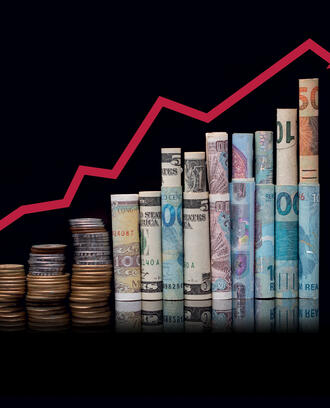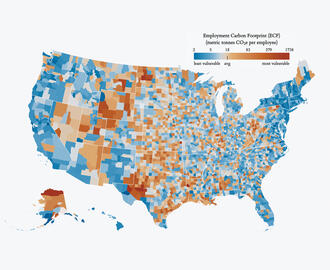Credit: Mimi Phan | iStock
As states around the U.S. begin to open up for business, economists have been trying to predict what the economy will look like — literally. Will it be V-shaped, U-shaped, W-shaped, or none of the above?
Speaking on a panel as part of the recent EmTech Next conference, three economists discussed what the road ahead will look like — both in the U.S. and globally. From dismal unemployment to anemic consumer spending, they agreed that short-term prospects are grim, with full recovery at least a few years off. Here are a few of their predictions:
1. The U.S. recovery will look like a reverse checkmark.
Although China and Western Europe are already on the mend, the U.S. hasn’t started its recovery yet, panel members agreed.
The stock market has rebounded from a bottom recorded in March, though it dropped again on Friday amid a worrying surge of new COVID-19 cases in the U.S. Also on Friday, the Labor Department said that nearly 1.5 million Americans filed for state unemployment insurance the previous week, marking the 14th straight week that the figure has topped 1 million.
A U.S. recovery should begin in the next couple months, said Adam Posen, president of the Peterson Institute for International Economics. Posen predicted the U.S. recovery will appear not as a classic V or W but as a "reverse checkmark," meaning a significant drop, followed by a smaller gain, represented by a short uptick on the other side.
Posen warned that the strength of the recovery depends on the country’s ability to contain the virus, but said he was still optimistic. “You'll have, barring a very different health outcome or barring the U.S. messing up its own health outcome, a pretty strong recovery for the next couple years,” Posen said.
2. In the U.S., unemployment will remain high.
The unemployment rate currently stands at 13%, and few expect it to fall back down to its pre-coronavirus level of 4%. While the rate might decline to 9% at the end of the year, Posen noted that's still a very high number.
Those rates can be attributed in part to the collapse of the restaurant industry — a dynamic that has disproportionately affected Hispanic workers — and to having fewer females in the workforce as most schools have remained closed and families have fewer child care options, said William Edward Spriggs, a professor of economics at Howard University and chief economist to the AFL-CIO.
“If we don’t have schools reopen, there’s no way we can get female labor force participation back to anything that is reasonable for the survival of the economy,” Spriggs said. “It's key to remember that, because the majority of the jobs lost in April were jobs that were held by women. They went from being the majority of the workforce to now being the minority of the workforce.”
3. Countries that invest in tech infrastructure and training will fare better.
Countries that have a significant segment of their population working from home (not just highly skilled or high-income groups) will fare better than those who don’t, said Linda Yueh, a fellow in economics at Oxford University and an adjunct professor of economics at London Business School.
So far, she said, economic studies are revealing that both the U.S. and Europe are skewed towards remote work arrangements for those who have more money. “That's not enough to support the recovery,” Yueh said. “We should make sure that people are skilled so they can use technology.”
To help, governments should create reliable infrastructure for people to connect to the internet and assist companies by providing the right technology and equipment so that people can do their jobs from home. These “are the kind of polices that will make the difference, I think, in terms of boosting productivity through what is going to be a tough and probably volatile recovery,” she said.
4. COVID-19 may encourage further localization of supply chains.
One consequence of the pandemic is that it has shaken up supply chains and revealed how fragile they are. When a disaster like COVID-19 strikes, suppliers and manufacturers often cannot offer all their products or fulfill all their customer orders due to disruptions.
Yueh said that the pandemic could cause further localization of supply chains, especially against the backdrop of geopolitical tensions between the U.S. and China.
"The trend around localization of supply chains has been happening for some time,” said Yueh. “I think what we learned in the last few years is certainly you cannot as a business neglect to look at what the geopolitical tensions are doing to cross-border investment supply chain decisions.”
5. U.S. consumer spending will remain weak for the next two years.
Given that millions of people have been laid off and fears of shopping in stores still persist, consumer spending is extremely weak. Consumer spending, which accounts for 70% of the U.S. economy, fell by 7.6% from January to March of this year— the largest decline since 1980.
Spriggs acknowledged the impact of sluggish consumer spending on the overall economy — consumer spending fuels 68% of U.S. GDP— and said the “angst” of American workers is making the recession worse.
“Good luck in getting the American consumer back, because the American consumer's going to be scared to death for the next two years,” Spriggs said. “You're not going to get them to make the kind of purchases that are going to refuel a recovery.”



